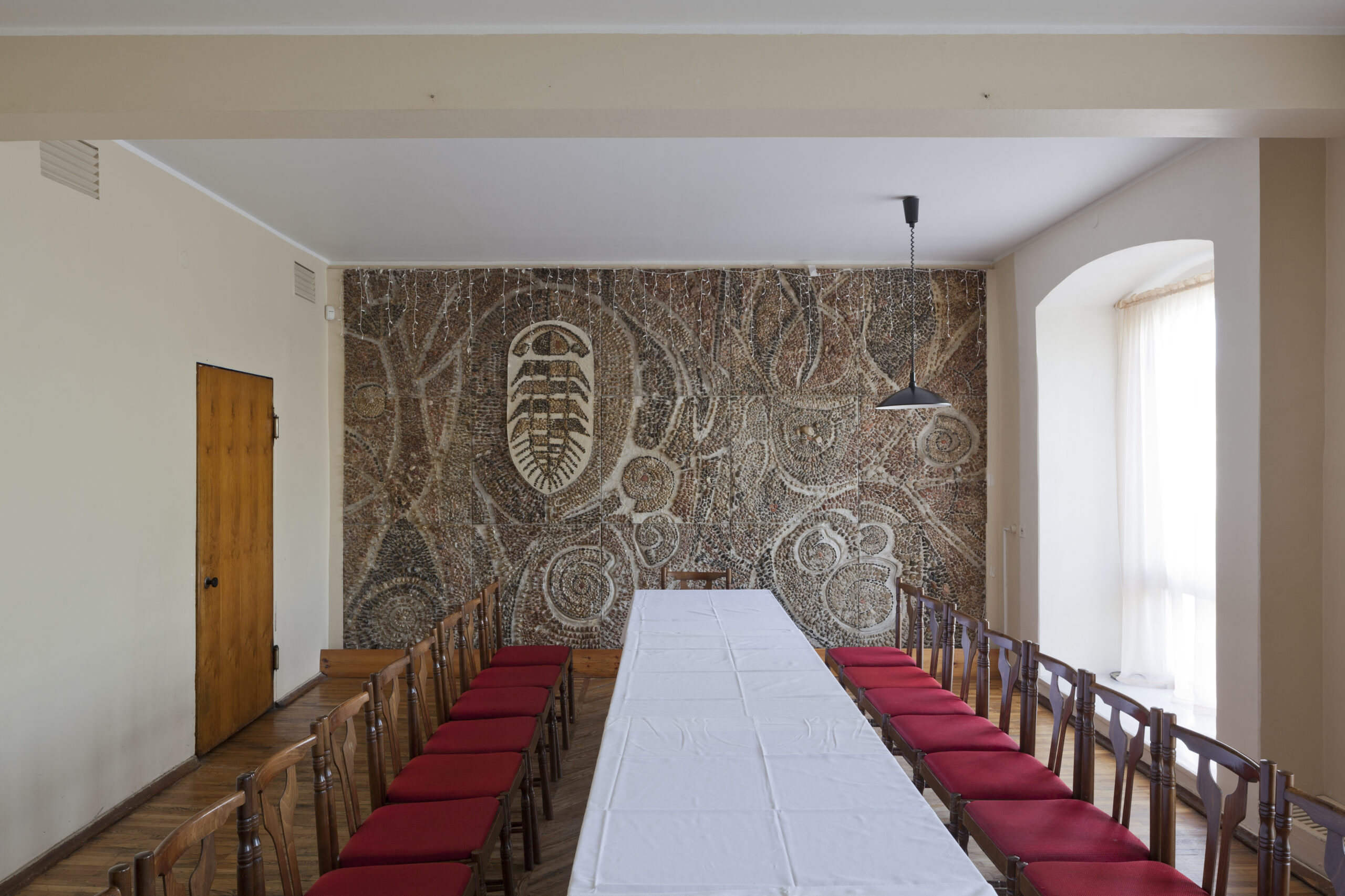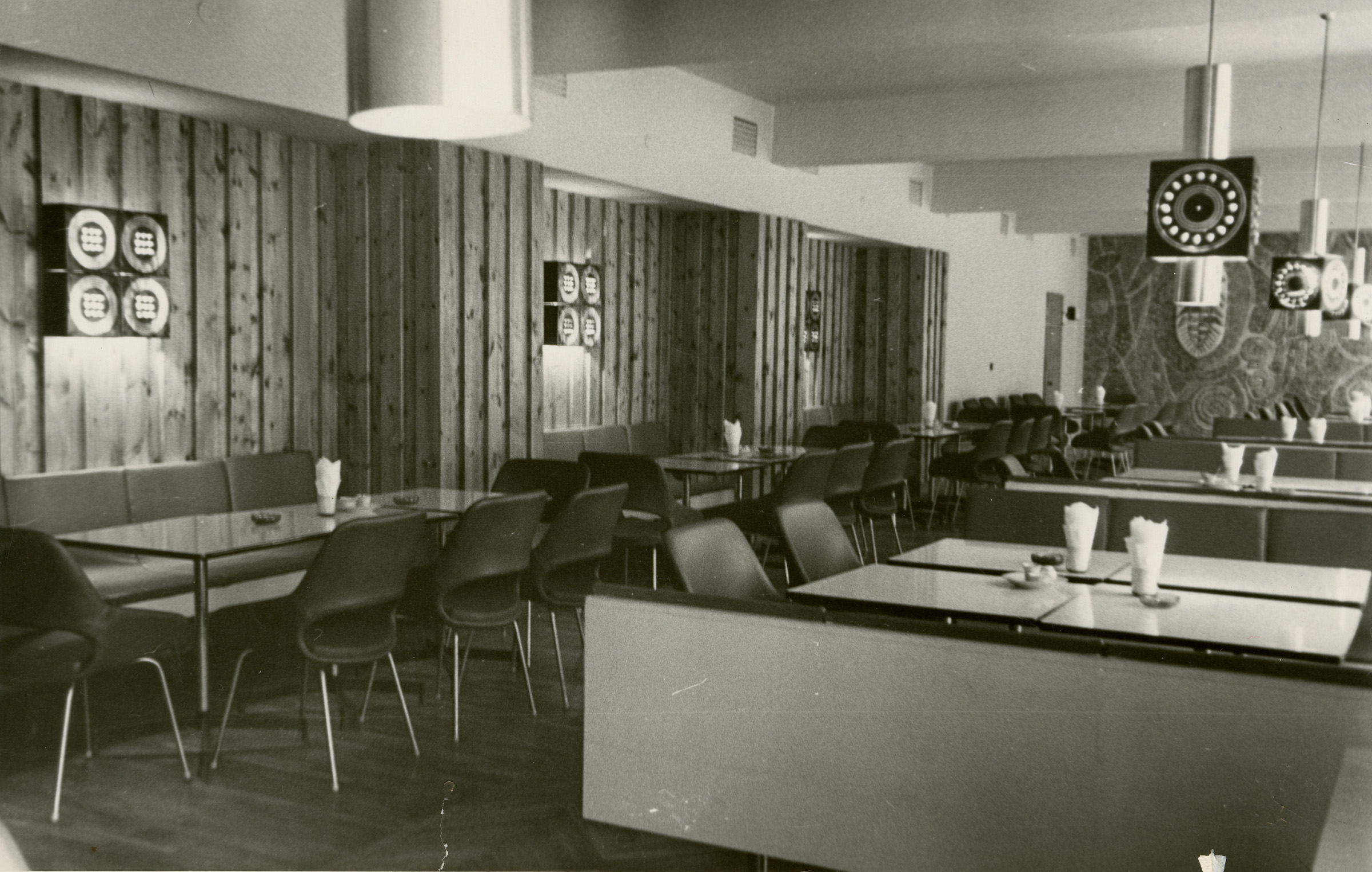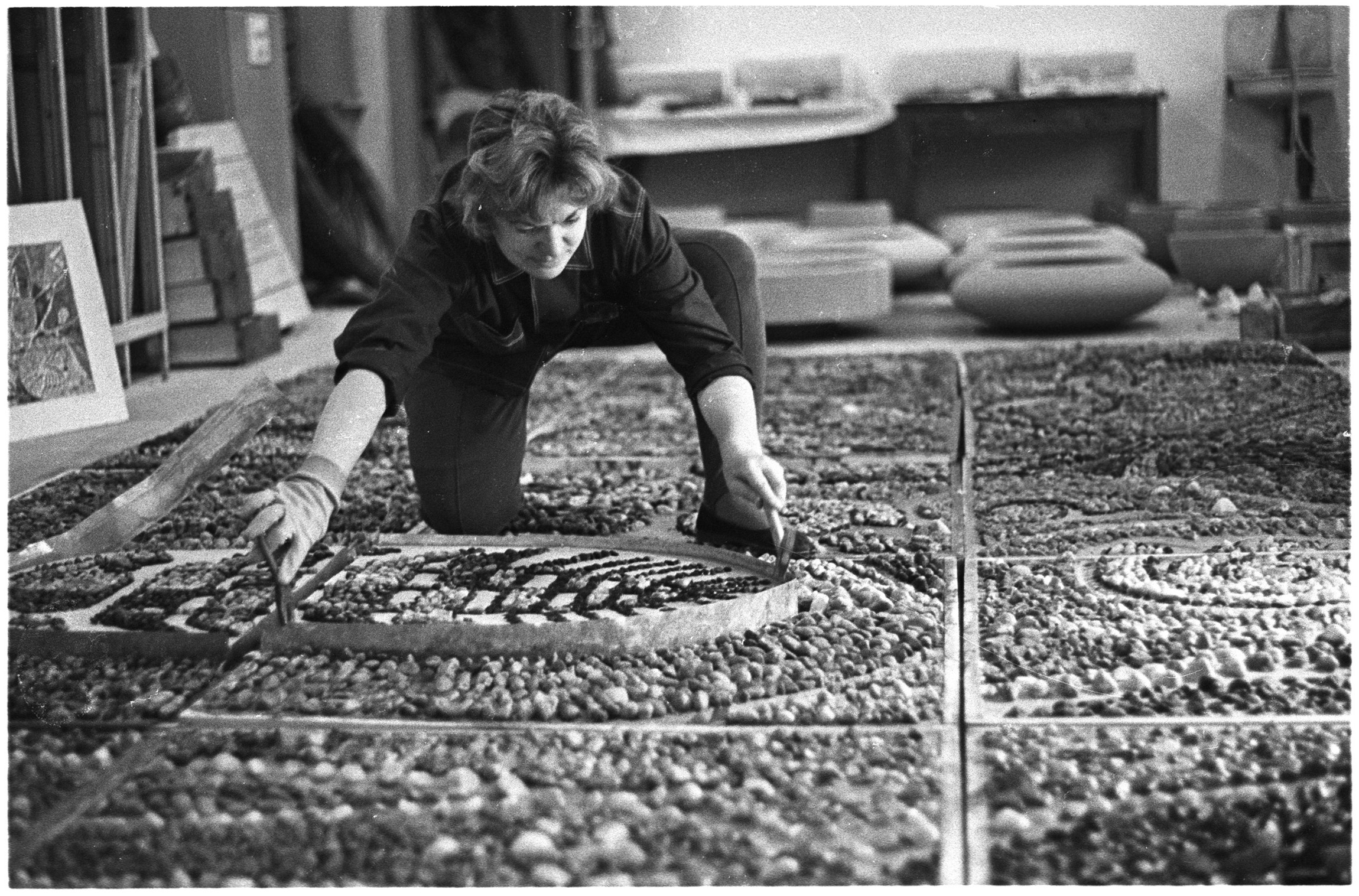Pannel Trilobiit (“Trilobite”)
Year of completion: 1967
Address: Ida-Viru County, Kohtla-Järve, Tuuslari 10
Author Valli Lember-Bogatkina
Not listed as a cultural monument
Kohtla-Järve and its surroundings became an important manufacturing area already during the Estonian Republic but during the Soviet Era, the town grew into one of the biggest manufacturing centres of the Estonian SSR. The local life and town’s development was highly dependent on oil shale mining and the production of oil and other products out of it. Slag mountains and spoil tips arose around the town, the town’s silhouette was defined by numerous chimneys and factories that were to remind the respected miners and chemics the triumph of industry in the Soviet Union. Oil shale as one of Estonia’s most important mineral resources became a cult on its own in Kohtla-Järve – motifs inspired by the miners’ work and the derivation of the mineral from the bowels of the earth were used in the town’s monumental art and even architecture.
One such example next to the monument Au tööle (“Glory to Work”) depicting miners, the water tower that is reminiscent of a miner’s helmet, and the monument-wagonette reminiscent of the beginning of oil shale mining is the pannel Trilobiit on an eatery’s wall in the Järve district (the Socialist district at the time). The eatery was located on the edge of the district’s main square – Rahu (Peace) square – on the first floor of a building completed in 1956. The Stalinist apartment building with service areas closes the admirable square’s southwest corner, and a position in such an important and visible location warranted a dignified interior. The establishment that had become a top food and drink spot over time developed into one of the most popular venues for festive events and receptions.
In 1967, a pannel made of sea stones collected from the Aa beach nearby was completed in the establishment’s dining hall. The 4 m long artwork covering an entire wall of the hall depicts an extinct marine arthropod, also known as a trilobite, the fossilised remains of which can be abundantly found in both limestone and oil shale. Oil shale is formed through the fossilisation of marine sediments, and thus the mass includes the remains of many ancient organisms. Because the mining of oil shale opened up the mysterious treasure chest of the primeval sea, trilobites became one of the symbols of both oil shale mining and the town of Kohtla-Järve. The interior design of the eatery was changed according to interior architect Maimu Pleesi’s design in relation the pannel’s creation. The eatery, formerly known as Kohvik nr 2 (Café no. 2), was renamed Trilobiit after the art piece, and soon became a restaurant.
A huge role in the preservation of the pannel is played by the restaurant’s long-time manager, and later owner, Tiiu Kaljurand who took fierce care of the piece’s preservation, despite numerous proposals to remove the bland “pile of stones”. She kept this standpoint up until 2014, when she ended the restaurant’s work and sold the rooms. Currently, the rooms are used by the Kohtla-Järve Word of God Congregation of the Full Gospel Church, the dining hall that has been converted into a church hall still has the pannel on its wall, but it is covered.
Madis Tuuder









